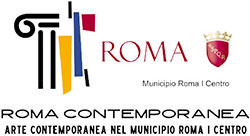“NVMINA” is an ancient, archaic expression of extraordinary power. It is the presence of the divine that resonates and disrupts the ordinary cadence of the world. It precedes the physical form of the sacred, which only later becomes anthropomorphic, knowable, describable. Sergio Di Paola, an artist deeply rooted in the lifeblood of his native Marsala, chooses this word to give the exhibition both meaning and force, jolting the gaze of those who enter. His ink stroke is continuous and conceptual: it belongs to someone who already possesses the result of creation in the mind before ever setting it down.
These are indisputably bodies that belong to us on a visceral level. What makes them ancient—beyond the names of the individual deities (Numina, the plural of Numen)—so that we feel them within us rather than merely imagining them before our contemporary eyes? Sergio Di Paola studies myth intently, yet he does not speak as an archaeologist, a philologist, or a devotee of a vanished classical world; he relives it intimately and daily, following a process of typification that the ancients themselves pursued when they gave their gods human form.
His eye lingers on contemporary bodies through the iconographic filter of classicism, drawing equally from archaeological collections and Renaissance echoes—the latter a tribute to the exhibition’s prestigious setting: the winter garden of Palazzo Tittoni. It is a perfect fusion of the architectural rigor of Carlo Fontana and the collectors’ age-old desire to sustain a dialogue with antiquity, a hallmark of the great creators of magnificent antiquaria.
Sergio Di Paola rekindles a past that never truly faded in the limbs of modernity. His line is contemporary—nervously fluid, assured, and compelling. There is no hatching, no chiaroscuro, no cast shadow. The labyrinthine weave of the line thickens and contracts to suggest perspective, to evoke mass, to let volume dissolve into the darkness of time. His rare ability to retrace anatomical profiles, the succession of sections glowing with a crystalline luminosity—cold, distilled, enclosed in an almost abstract visual capsule—captures fleeting instants and transforms them into timeless medallions.
These bodies survive only through their essential parts. They are not mutilated but distilled to their deepest sense: what remains condenses and expresses the whole, a compositional lesson that forges a direct bridge to the Viennese Secession and the drawings of Schiele. Ageless nudes, in the prime of life, adorned only with their own identifying attributes, the subjects of NVMINA seek not ritual but Olympus, their own true nature.
The artist gathers them into three great epiphanies:
• the red maelstrom, where color becomes substance, carving the vehemence and frenzy of myth into broad, flat planes;
• the genealogy of the sun, in which pigment remains confined to the circularity of the celestial disc, symbolically merging with the divine;
• and works freely inspired by the mysterious imagery of the underground Basilica of Porta Maggiore, where deep blue carries the viewer into a reflective mental space, still alive despite the centuries’ passage.
The reading of each myth is entirely contemporary, experienced not as a distant cosmic force but in its ability to generate psychological and behavioral archetypes that find their most fitting physical form within the multifaceted human universe. Thus we see not only presence and semblance but also inner motion, the stirring of the soul that shakes the whole being and—through ecstasy or pain—twists or encloses it, agitates or ignites it.
The artist imposes a deliberate, refined restraint: he does not yield to expressionism, to distortion as a vehicle for anguish or lament. This choice, which keeps every work suspended in a timeless dimension, is the exhibition’s quiet triumph. These NVMINA are not humans made titanic; they do not succumb to the theatricality of our suffering. They live their tragic or glorious fates with serenity, in an utterly different, indeed divine, way that preserves their sacredness intact.
Massimiliano Reggiani
PRESS RELEASE
The exhibition “NVMINA – The Throb of the Past, the Roots of Identity”, curated by Massimiliano Reggiani, presents twenty-five ink drawings on paper by Sergio Di Paola and forms part of the official program of Rome Art Week 2025.
Hosted in the winter garden of the prestigious Palazzo Tittoni—built in the late sixteenth century on the vineyards of Cardinal Grimani and later expanded under architect Carlo Fontana—the exhibition unfolds as a journey weaving myth, symbol, and memory, with the aim of exploring the roots of collective identity.
Dates and Hours
Visits: 20–25 October 2025, by appointment, from 5:00 p.m. to 7:00 p.m.
The exhibition develops through three thematic cycles, conceived as stages of a voyage through an archaic imagination reinterpreted in a contemporary key:
• The Dionysian: figures linked to Dionysus and his mythical retinue, marked by stark contrasts of red and black, where intoxication and instinct emerge as visceral impulses inherent to the human soul;
• The Genealogy of the Sun: works dominated by the emblem of the solar disc, bearer of cyclicality, eternity, light, and the connection between earthly and cosmic spheres;
• The Cycle of Stuccoes from the Underground Basilica of Porta Maggiore: a personal reinterpretation of those enigmatic images, rendered in a language of deep blues and blacks, balancing formal rigor with visionary tension.





